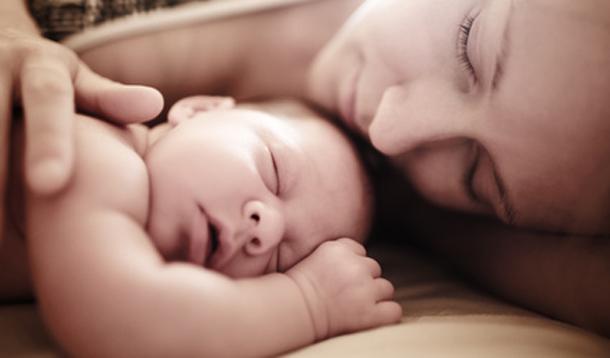
Co-sleeping vs. room sharing is an ongoing debate, one I hear from my parents quite frequently. What if I want to co-sleep? Is it really that dangerous? A new study from the London School of Hygiene & Tropical Medicine states that it is. Lead researcher Professor Bob Carpenter explains that even breastfed babies of non-smoking parents have a “fivefold increase in the risk of crib death.”
This published study has caused much discussion in the parenting world, but there is one major thing to keep in mind. We don’t know what type of safe sleep practices that the co-sleeping parents in this study were following. As a professional sleep educator, one that practices safe sleep with my clients, I do believe in and encourage the American Association of Pediatrics and the Canadian Pediatrics Society’s recommendations on safe sleep: place baby on their back, alone, and room share on an independent surface like a crib or bassinet. But I, too, struggle with this ongoing debate because I believe that parents everywhere are going to continue to co-sleep and studies like these shouldn’t make those parents feel guilty or scared. The important thing to understand is that there are safer ways to co-sleep and there needs to be more information and discussions about it.
If a parent chooses to co-sleep it needs to be a committed decision made between both parents as it’s going to be a complete lifestyle change. When parents are co-sleeping out of sheer desperation for sleep, what I call reactive co-sleeping, that is when things can become very dangerous. Parents need a plan. They need to know what will be involved in safely preparing their sleep environment for co-sleeping and everything needs to be implemented to the fullest extent before the baby is ever in bed with either parent.
The direct cause of SIDS isn’t fully understood and each study done surrounding it gives us that much more information. What we do know is that there are precautions we can take that can possibly help reduce the risk. As I mentioned, I stand behind the AAP and CPS and choose room sharing as the safer route, but I also feel it’s my responsibility to educate parents on the safest steps of whichever sleep environment is chosen. There is always a safer way of doing it and educating yourself is the first step.